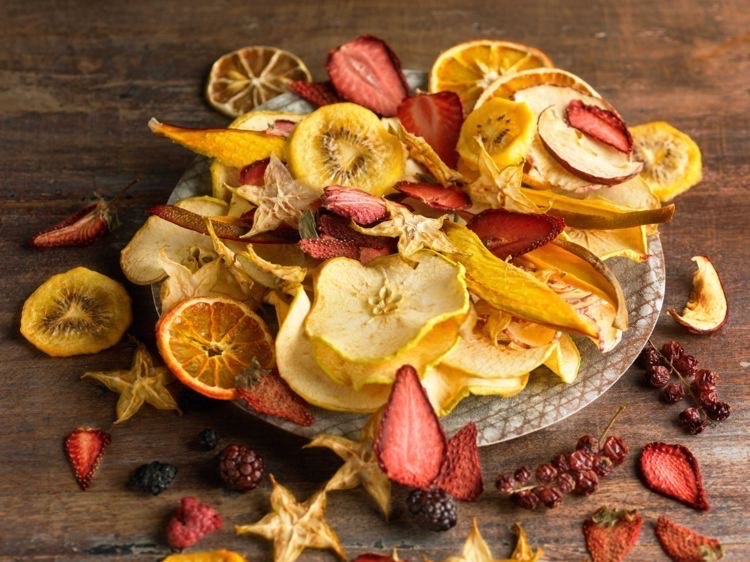
Types of Dried Fruits and Their Appearance
Dried fruits rank among the most favored and nutritious foods, providing a variety of health benefits while being both tasty and convenient to store. This article will examine various types of dried fruits, their characteristics, and their impact on health.
Dried Fruits Using Advanced Techniques
Employing methods such as freeze-drying and low-pressure drying, the visual integrity of dried fruits is notably maintained. These processes ensure that the fruits resemble their fresh versions closely, with little alteration in form. They effectively preserve the natural hues and sizes of the fruits, enhancing their visual attractiveness for consumers.
-
For instance, freeze-dried blueberries maintain their plump and rounded shape, outperforming conventional drying techniques in flavor and color retention.
-
Similarly, apples dried with contemporary methods exhibit a smoother and more authentic appearance.
The Impact of Technology on Dried Fruit Appearance
A significant development in the production of dried fruits is the application of nano-technology. Nano-coatings enhance the stability of dried fruits' appearance over time, effectively minimizing moisture loss.
-
Dried Figs: The use of nano-coatings allows dried figs to retain a more natural and softer look, thereby decreasing the likelihood of breakage.
-
Dried Cherries: Nano-technology ensures that dried cherries remain closer to their fresh counterparts in terms of color and texture.
Diversity in Dried Fruits
A broader selection of dried fruits is now accessible than ever before. Alongside classic options such as dates, raisins, and figs, the market is also seeing the introduction of newer varieties, including dried tropical and exotic fruits.
Dried Tropical Fruits
-
Dried Pineapple: These vibrant yellow, chunky pieces maintain a fresh flavor and appearance thanks to low-pressure drying methods.
-
Dried Kiwi: This fruit preserves its soft, rounded shape and has gained popularity in markets due to its impressive nutritional benefits.
Exotic Dried Fruits
-
Dried Sumac: Commonly utilized in herbal teas, dried sumac appears significantly larger and firmer compared to its fresh counterpart.
-
Dried Goji Berries: These elongated, bright red fruits are regarded as a contemporary addition to the dried fruit category.
Dried Fruit Appearance vs Fresh Fruit
One of the most striking characteristics of dried fruits is the dramatic transformation in their appearance, particularly in fruits with delicate skins such as dried apricots and dried pomegranates, which shrink and become dry, fragile pieces.
Dried Fruits and Alterations in Shape
-
Dried Apricots: These fruits transition from a sweet, succulent state to a compact, wrinkled form, often taking on a deep orange hue.
-
Dried Pomegranate: The seeds diminish in size and become more brittle during the drying process, rendering them ideal for incorporation into herbal teas and spice blends.
Environmental and Agricultural Effects on Dried Fruit Appearance
Climate conditions and agricultural practices play a crucial role in determining the quality of dried fruits. Fruits cultivated in natural environments typically exhibit superior appearance and flavor. Additionally, organic farming practices contribute to a more authentic look in dried fruits.
Examples:
-
Organic Dried Dates: Dates that are dried using organic methods often showcase a more vibrant appearance and a softer consistency.
-
Organic Dried Apricots: In contrast to those dried through conventional methods, organic dried apricots retain a lighter hue and a more natural form.
Conclusion
Today, advancements in technology and shifts in agricultural methods have led to a wider variety and improved quality of dried fruits. Modern drying techniques enable these fruits to preserve their flavor, nutritional benefits, and distinctive appearance.
Goharshid Sanat Naghshe Jahan Company


